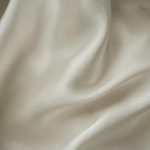Are you searching for a fabric that closely resembles wool? Look no further! In this article, you’ll discover a variety of luxurious alternatives that will keep you warm and stylish.
From the soft and warm cashmere to the fuzzy and durable mohair, there’s a perfect option for everyone. Whether you’re on a budget or looking for the finest and most breathable substitute, we’ve got you covered.
Get ready to explore the world of wool-like fabrics and find your perfect match!
Table of Contents
Alpaca: A Luxurious Alternative to Wool
If you’re looking for a luxurious alternative to wool, alpaca is a great option to consider. Alpaca is often compared to cashmere due to its softness and warmth. However, there are some key differences between the two.
Alpaca fibers are hollow, which makes them lighter and more breathable than cashmere. This means that alpaca keeps you warm in cold weather without causing you to overheat. Alpaca is also hypoallergenic, making it a great choice for those with sensitive skin or allergies.
One of the major benefits of alpaca is its durability. Alpaca fibers are known for their strength and resilience, making them less prone to pilling and wear. This means that alpaca garments can last for many years with proper care. In addition, alpaca is naturally water-repellent, which means it can withstand light rain and moisture without losing its insulating properties.
Another advantage of alpaca is its sustainability. Alpacas have a low impact on the environment, as they have soft padded feet that minimize soil erosion and they graze on grass, which helps to regenerate pastures. Alpaca fibers are also biodegradable, making them a more eco-friendly choice compared to synthetic materials.
Cashmere: The Soft and Warm Fabric
Cashmere is known for being incredibly soft and warm. When it comes to the ultimate battle of softness and warmth, cashmere vs merino, cashmere is the clear winner.
Cashmere wool comes from the undercoat of cashmere goats, which makes it one of the softest and most luxurious fabrics available. It is highly coveted for its exceptional softness, lightweight feel, and superior insulation properties.
Compared to merino wool, cashmere is even softer and provides better warmth. Merino wool comes from merino sheep and is also known for its softness and warmth, but it falls short when compared to cashmere. Cashmere fibers are finer and more delicate, which contributes to its unmatched softness. These fibers are also highly efficient at trapping warmth, making cashmere garments perfect for cold weather.
In addition to its softness and warmth, cashmere is also highly durable and long-lasting. With proper care, cashmere garments can last for many years without losing their softness or shape. It is also naturally hypoallergenic, making it a great choice for those with sensitive skin.
Overall, if you are looking for the ultimate combination of softness and warmth, cashmere is the fabric to choose. Its luxurious feel and exceptional insulation properties make it a top choice for high-quality, cozy garments.
Mohair: A Fuzzy and Durable Option
When it comes to finding a fuzzy and durable option, mohair is a great choice for you. This fabric is known for its softness and resilience, making it a popular choice for various garments and home decor items.
Here are a few reasons why mohair stands out:
-
Versatility: Mohair can be used in a wide range of products, including sweaters, blankets, upholstery, and even socks. Its versatility makes it a go-to option for many.
-
Durability: One of the key advantages of mohair is its durability. It is a strong and resilient fabric that can withstand regular wear and tear. This makes it a great investment, as mohair items are known to last for a long time.
-
Mohair vs. Alpaca: While alpaca is another popular choice for fuzzy fabrics, mohair offers several advantages. Mohair is lighter, stronger, and has better elasticity compared to alpaca. It also has a natural sheen that adds a touch of luxury to any item.
Angora: Delicate and Fluffy Like Wool
When it comes to comparing Angora and wool, you might be surprised to find that Angora is actually softer than wool.
The softness of Angora comes from the fine hairs of the Angora rabbit, which are much finer than the fibers of sheep’s wool.
However, despite their differences, both Angora and wool have a similar texture that is known for its warmth and comfort.
Angora Vs. Wool
Angora is softer than wool, but wool is more durable.
When comparing angora to merino wool, you’ll find that angora is even softer and has a luxurious feel. Its fibers are finer and fluffier, making it ideal for cozy sweaters and accessories. However, angora is not as durable as merino wool. Merino wool is known for its strength and resilience, making it a popular choice for outdoor clothing and activewear.
On the other hand, when comparing angora to acrylic, angora wins in terms of softness and warmth. Acrylic is a synthetic fiber that mimics the appearance of wool but lacks the natural warmth and softness of angora.
Overall, angora is a wonderful alternative to wool if you prioritize softness and comfort.
Softness of Angora
Now that you know about the differences between Angora and wool, let’s dive into the softness of Angora. Angora is known for its incredible softness, which makes it a popular choice for luxurious garments.
Here’s what sets Angora apart from other soft fabrics:
-
Angora vs Cashmere: While both fabrics are soft, Angora has a unique fluffiness that gives it a cloud-like feel. Cashmere, on the other hand, is known for its smoothness and warmth.
-
Angora vs Mohair: Mohair, which comes from the Angora goat, is often compared to Angora. While both are soft, Angora has a finer and more delicate feel, while Mohair has a slight coarseness to it.
-
Sensory Experience: When you touch Angora, you’ll immediately notice its incredible softness. It’s like running your fingers through a soft, fluffy cloud, making it a delight to wear against your skin.
Similarities in Texture
As you feel the softness of Angora against your skin, you’ll notice that it has a distinct texture that sets it apart from other fabrics. When comparing wool with other natural fibers, such as cotton and silk, you’ll find that they share some similarities in terms of texture. However, wool has a unique texture that is unmatched by synthetic alternatives like polyester and nylon. To help you visualize the differences, here is a table that compares the texture of wool with other fabrics:
| Fabric | Texture |
|---|---|
| Wool | Soft and fuzzy |
| Cotton | Smooth and soft |
| Silk | Smooth and silky |
| Polyester | Smooth and slick |
| Nylon | Smooth and durable |
As you can see, wool stands out with its soft and fuzzy texture, providing a cozy and warm feel that synthetic alternatives cannot replicate.
Merino: The Finest and Most Breathable Wool Substitute
You’ll love how Merino wool is incredibly soft and breathable, making it the perfect substitute for traditional wool. Here are four reasons why Merino wool stands out when compared to other wool substitutes like cashmere, mohair, and angora:
-
Exceptional Softness: Merino wool is known for its luxurious softness, comparable to cashmere. Its fibers are finer and smoother, resulting in a comfortable and gentle feel against your skin.
-
Superior Breathability: Merino wool has natural moisture-wicking properties, allowing it to absorb and release moisture efficiently. This means it can keep you warm in cold weather while also preventing overheating in warmer climates.
-
Odor Resistance: Merino wool is naturally resistant to odors because of its unique structure. It has the ability to trap odor-causing bacteria, preventing them from spreading and causing unpleasant smells.
-
Versatility: Merino wool is highly versatile, just like mohair and angora. It can be used to make a wide range of garments, from cozy sweaters and scarves to lightweight base layers for outdoor activities. Its ability to regulate body temperature makes it suitable for various climates and activities.
Experience the comfort and performance of Merino wool as a luxurious alternative to traditional wool.
Camel Hair: A Cozy and Natural Alternative
Camel hair is a warm and natural alternative to traditional wool. If you’re looking for a cozy and sustainable fabric, camel hair is a great choice. It offers numerous benefits that make it stand out from other materials, including its softness, warmth, and durability.
Compared to alpaca wool, camel hair is known for its superior insulating properties. It traps heat effectively, keeping you warm even in the coldest temperatures. Additionally, camel hair is incredibly soft and comfortable against the skin, making it perfect for garments like sweaters, scarves, and blankets.
One of the key advantages of camel hair is its durability. It is known to be incredibly strong and resilient, allowing it to withstand frequent wear and tear without losing its shape or quality. This makes camel hair products long-lasting and a worthwhile investment.
When comparing camel hair to alpaca wool, camel hair has a smoother and silkier texture, while alpaca wool has a fluffier feel. Both fabrics are hypoallergenic and naturally water-resistant, but camel hair tends to be more lightweight and breathable.
Vicuña: The Rare and Exquisite Fabric
When it comes to luxurious and rare fabrics, vicuña is a top choice for those seeking exquisite quality and unparalleled softness. Here are some reasons why vicuña stands out among other fabrics:
-
Vicuña vs Alpaca:
-
Vicuña is considered even more luxurious and rare than alpaca.
-
Vicuña fibers are finer and softer than alpaca fibers.
-
Vicuña garments are known for their exceptional warmth and lightweight feel.
-
Merino vs Cashmere:
-
Vicuña is often compared to cashmere due to its incredible softness.
-
However, vicuña is finer and lighter than cashmere, making it the ultimate luxury fabric.
-
Vicuña is also known for its superior insulating properties, even surpassing merino wool.
Vicuña fabric is a true testament to nature’s marvel, as it comes from the wild vicuña, a member of the camelid family found in the Andean regions of South America. Due to its rare and limited supply, vicuña fabric is highly sought after, with only a limited number of garments produced each year.
The exceptional softness, warmth, and lightweight nature of vicuña fabric make it a favorite among discerning consumers who value both comfort and exclusivity.
Acrylic: A Budget-Friendly Wool-like Material
If you’re looking for a budget-friendly alternative to wool, acrylic might be the perfect choice for you. Acrylic is a synthetic fiber that closely resembles wool in its texture and appearance.
One of the main benefits of acrylic is its affordability, making it a popular choice for those on a tight budget.
Acrylic Vs Wool: Differences
Acrylic is a synthetic fabric that is often used as a wool substitute. When comparing acrylic to wool, there are two important factors to consider: warmth and durability.
In terms of warmth, wool is the winner. Wool has natural insulating properties that help to retain heat and keep you warm in cold weather. Acrylic, on the other hand, tends to be less warm and can sometimes feel less cozy.
In terms of durability, acrylic outperforms wool. Acrylic is known for its strength and ability to withstand wear and tear. It is less prone to shrinking, stretching, or losing its shape compared to wool. Additionally, acrylic is more resistant to moths and other pests that can damage fabrics.
Overall, while acrylic may not provide the same level of warmth as wool, it offers greater durability and is a more affordable option.
Benefits of Acrylic
Now that you understand the differences between acrylic and wool, let’s delve into the benefits of acrylic and why it is such a popular choice.
Acrylic offers several advantages that make it a preferred fabric for many people. Firstly, it is incredibly soft and lightweight, providing comfort and ease of wear.
Additionally, acrylic is known for its excellent color retention, meaning your garments will remain vibrant and bright even after multiple washes.
Another advantage is its durability; acrylic fibers are resistant to wear and tear, making them long-lasting.
Furthermore, acrylic is hypoallergenic, making it a suitable choice for those with sensitive skin or allergies.
Lastly, acrylic is less expensive than wool, making it a more affordable option for those looking for warmth and style.
With its softness, durability, hypoallergenic properties, and affordability, it’s no wonder that acrylic is a popular choice among many.
Affordable Wool Alternative
The affordability of acrylic makes it a great alternative to wool. Acrylic is a synthetic fiber that is widely used in the textile industry due to its affordability and versatility. It is a popular choice for those who are looking for an affordable wool alternative. Acrylic is known for its softness, warmth, and durability, making it a suitable option for a variety of clothing and household items. Additionally, acrylic is a sustainable wool alternative as it is made from petroleum, a renewable resource. It is also resistant to moths and does not shrink or fade easily. Here is a comparison table to help you understand the benefits of acrylic as a wool alternative:
| Acrylic | Wool |
|---|---|
| Affordable | Expensive |
| Synthetic | Natural |
| Soft | Soft |
| Warm | Warm |
| Durable | Durable |
Conclusion
So there you have it, a variety of fabrics that are similar to wool. Whether you’re looking for luxury, softness, durability, or affordability, there’s an option for you.
Alpaca, cashmere, mohair, angora, merino, camel hair, vicuña, and acrylic all offer different qualities and characteristics that make them suitable alternatives to wool.
Next time you’re shopping for clothing or home textiles, consider these fabrics as a comfortable and stylish choice.
- The Use of Nonwovens in Construction and Civil Engineering - July 11, 2025
- The Use of Nonwovens in Construction and Civil Engineering - July 11, 2025
- The Use of Nonwovens in Construction and Civil Engineering - July 11, 2025





